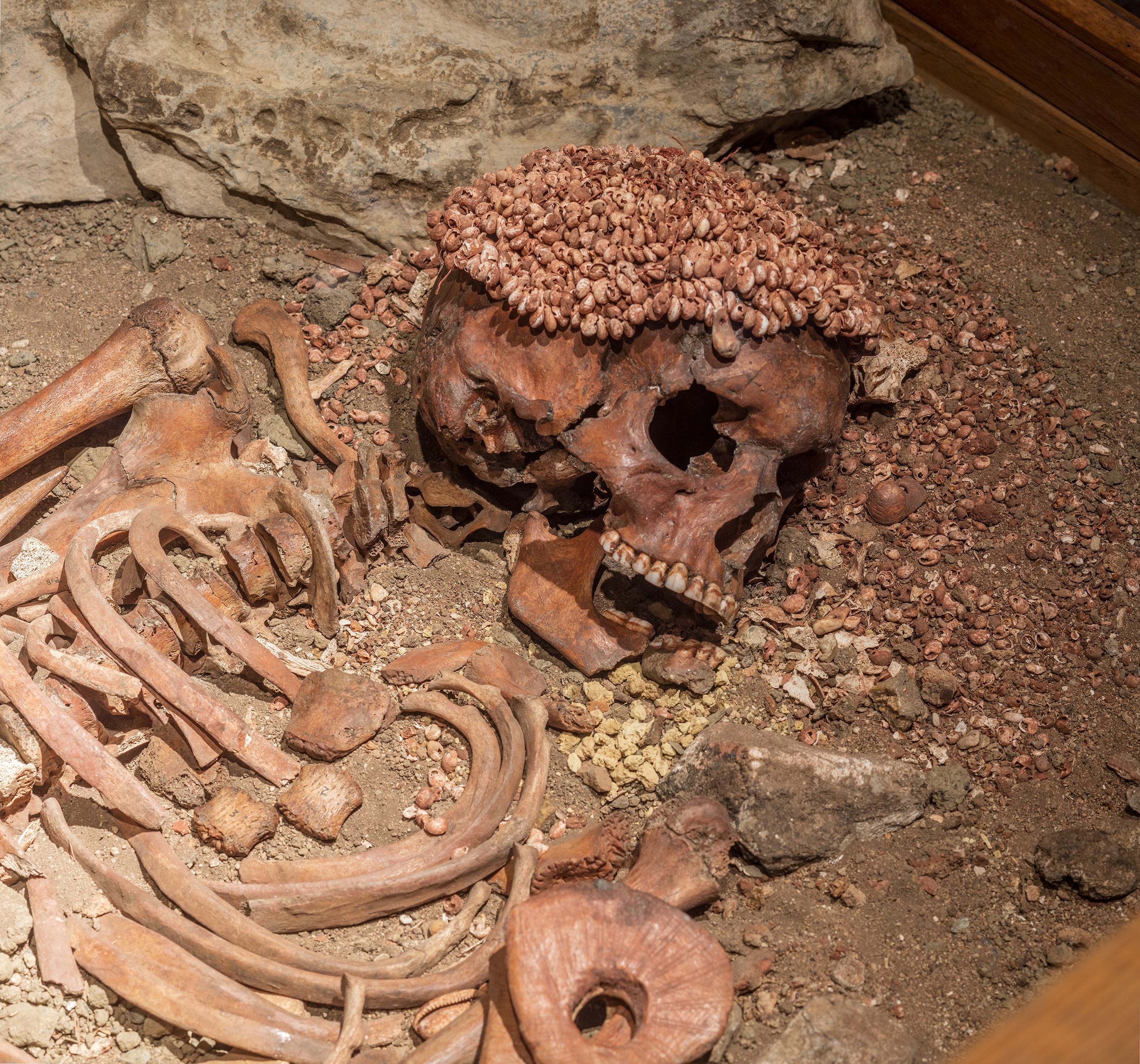
Click here to view image
Upper Paleolithic
Human bones, mammoth ivory pendants, pierced shells, red ochre, worked portions of elk antler, flint blade, skeleton length 1.70 m
First floor; in state storage (inv. no. BERNABO' BREA-CARDINI 3370-3383)
Arene Candide Cave, Savona, Cardini excavations, 1942
Find; Burial
Discovered at a depth of 6.7 m in the Arene Candide Cave, this young hunter owes his nickname of “Prince” to the extraordinary grave goods with which he was buried.
He is 1.7 m tall, with very strong arms, especially the right, for throwing spears when hunting, and legs trained by continual and prolonged exertion.
Analysis carried out on his bones indicate that he ate a lot of meat from wild animals, but also fish and molluscs.
The body is positioned on its back and is covered in red ochre, with a rich set of grave goods: a cap made of hundreds of perforated shells, a long blade of flint of French origin grasped in his right hand, a shell bracelet with a mammoth ivory pendant, four perforated batons made from elk antler, carved with decorative lines and notches, and two mammoth ivory buttons next to his knees.
The boy died from a terrible wound to his jaw and left shoulder inflicted by a bear or big cat. He belongs to the culture known by archaeologists as Gravettian, documented from Portugal to Russia during the Upper Palaeolithic period: incredible similarities have in fact been found between the Prince and another hunter found 3000 km away in Sungir, Russia.




